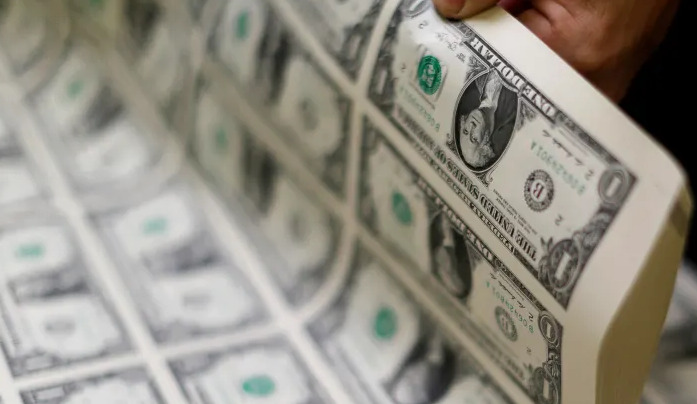On Friday, the dollar was poised to experience its most significant weekly decline in five months, as the expectation of interest rate reductions by the Federal Reserve, in contrast to a stringent stance on monetary policy by European central banks, fueled weekly gains in the euro and the pound.
The dollar is affected by the Fed’s rate outlook. Traders and investors are awaiting word from the Bank of Japan, the final major central bank to convene this month, on whether or not it will announce its intention to abandon its current policy of maintaining interest rates at extremely low levels the following week.
During a week filled with activity for central banks, speculators gained greater insight into the probable timing of interest rate reductions when Federal Reserve Chair Jerome Powell stated at a meeting on Wednesday that monetary policy tightening is likely to cease, with a discussion of cuts “in sight.”
Read more: As China Adopts More Renewable Energy Sources Global Coal Demand Will Decline.
The dollar index is poised for a near-2% decline this week due to the divergence between the U.S. and other central banks; this would be its most considerable weekly loss since mid-July and approximately its lowest in four months. The daily closing price was 101.94.
The CME FedWatch tool indicates that investors are currently pricing in a 75% probability of a rate reduction by the Federal Reserve in March on futures markets. At the onset of December, the likelihood of a decrease was approximately 40%.
The markets anticipate a 150-basis-point decline in U.S. interest rates by the conclusion of the following year, which is double the reduction expected by the Federal Reserve’s projections of 75 basis points in 2024.
In contrast to the dollar, anticipating such a lenient interest rate environment has sparked an upswing in risk assets over the last twenty-four hours. Analysts warn, however, that the optimism may not endure as the U.S. economy continues to contract and inflation remains above target.
An aspect of astonishment pervaded the degree to which the Federal Reserve has complied with market demands. “Christmas arrived early,” said Fiona Cincotta, a strategist for the City Index.
The financial markets have factored in a significant reduction in interest rates but not the potential economic repercussions resulting from the type of activity decline that the Federal Reserve may require to return core inflation to 2%.
“Although there is the possibility of additional U.S. dollar weakness, I believe the concern is that if the Federal Reserve eases up too quickly, that return could be realized in inflation.” “It is a scenario that has been witnessed previously, and investors will be cognizant of it — albeit not immediately since we are still overcome with elation over the decision,” Cincotta explained.
Divergent Perspectives
The euro and pound rose on Thursday as the European Central Bank and Bank of England reaffirmed their commitment to combating inflation and pushed back against bets on imminent interest rate reduction, in contrast to the Federal Reserve.
Despite this, investors continue to place substantial bets on rate decreases by both central banks in the coming year.
Low growth and a steep decline in inflation, according to Pepperstone strategist Chris Weston, provide the ECB with more leeway than most to reduce.
“However, the opposition from (ECB President) Lagarde and colleagues raises doubts regarding the timing of initial easing; perhaps it is advantageous to maintain a strong currency to restrict imported inflation.”
The euro fell to a session low of $1.0946 on Friday, as preliminary readings of business activity in France and Germany indicated an unexpected deceleration in the eurozone’s two largest economies this month. This caused the currency to fall by as much as 0.4%. It last traded at $1.0954, a 2% weekly increase.
Following the BoE’s hawkish stance on Thursday, the value of sterling increased 1.1% to a four-month high of $1.2793 before falling 0.04% to $1.2761.
In the meantime, the Japanese yen decreased 0.2% to 141.54 per dollar on Thursday after increasing 0.7% to a four-and-a-half-month high of 140.95.
The yen is poised for its fifth consecutive week of gains against the dollar, a streak that has lasted since mid-2020 and is currently up 2%.

